Most people’s thoughts regarding West Virginia are about coal mining, bluegrass, great white water rafting, and the rugged topography of the Appalachian Mountains.
West Virginia defines itself by its natural beauty, as the state slogan, “Wild and Wonderful,” shows. Yet, we all know with certainty that some places in West Virginia are more wonderful than others.
We compiled a list of which places in West Virginia are the least wild and wonderful to live in so you don’t have to find out for yourself.
Here’s the worst of the worst in West Virginia:
Table Of Contents: Top Ten | Methodology | Summary | Table
The 10 Worst Places To Live In West Virginia For 2024
Where are these places, you wonder? And before you get all riled up and say we’re picking on small towns in West Virginia, that’s not the case.
We understand there’s a lot of good in every place. For example, the best place to live in West Virginia is Bridgeport.
However, according to data (which doesn’t measure things like beauty and ‘friendly people’), the state has far better options for making a place home. And the worst place to live in West Virginia? The worst place to live in West Virginia is Bluefield.
Read below to see how we crunched the numbers and how your city fared in 2024.
If you’re looking for something more national, check out the worst cities in America or the worst states in America.
For more West Virginia reading, check out:
- Best Places To Live In West Virginia
- Cheapest Places To Live In West Virginia
- Most Dangerous Cities In West Virginia
The 10 Worst Places To Live In West Virginia For 2024
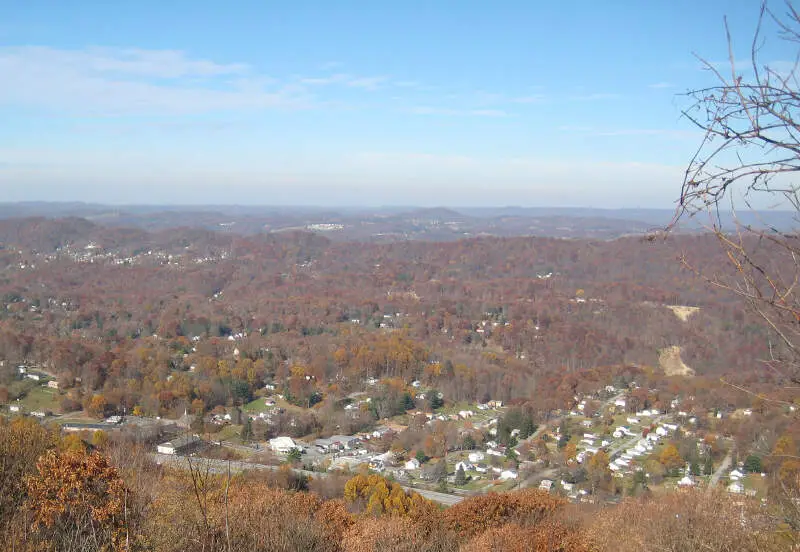
/10
Population: 9,619
Average Home Price: $101,761
Median Income: $45,854
Unemployment Rate: 6.4%
Crime Per Capita: 0.0145
More on Bluefield: Data | Crime | Cost Of Living | Real Estate
Bluefield went through boom times around the start of the 20th century. Located in the mountains in the southernmost part of the state, right along the Virginia border, it represents the site of a major coal discovery. As a result, the town went from less than 2,000 residents in 1890 to a population of more than 20,000 by 1940.
Since then? Well, things have been going the other direction. These days, the town has shrunk to 9,619 residents and the economic prospects have dimmed. The unemployment rate comes in at a scary 6.4%, while even people who find jobs have to make due with a median income of just $45,854.
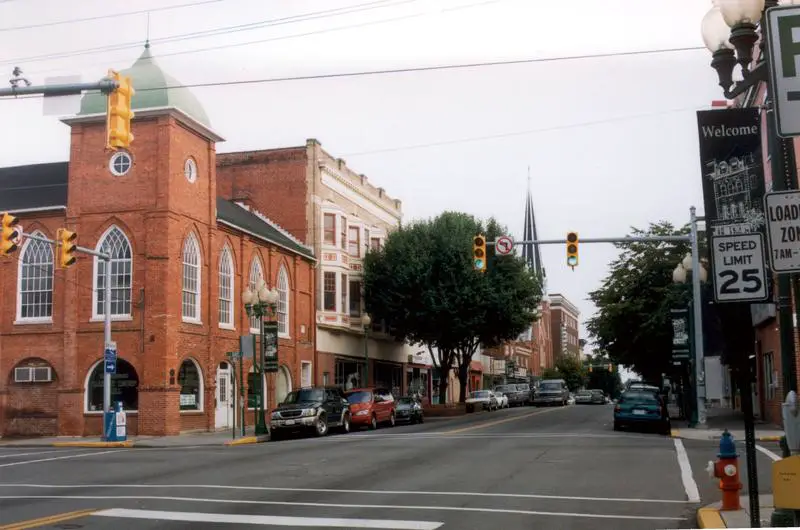
/10
Population: 18,678
Average Home Price: $275,161
Median Income: $55,240
Unemployment Rate: 9.1%
Crime Per Capita: 0.0297
More on Martinsburg: Data | Cost Of Living | Real Estate
Let’s start here: Martinsburg’s poverty rate comes in just shy of 30%. Do you need any other stats to explain how it ended up on this list? Okay, how about a 9.1% unemployment rate and a $55,240 median income? Enough for you yet?
Located in the northeast part of the state, Martinsburg sits along I-81, a short drive from the Maryland border and about a half hour from Hagerstown, Maryland. Despite the devastating poverty, the town has its charms. This includes a series of historic buildings, such as the Belle Boyd House and the General Adam Stephen House & Triple Brick Museum.
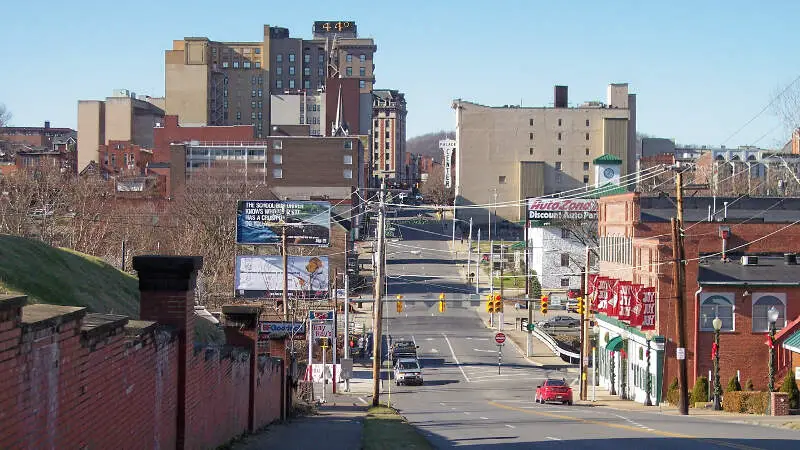
/10
Population: 15,977
Average Home Price: $103,032
Median Income: $46,595
Unemployment Rate: 5.9%
Crime Per Capita: 0.0404
More on Clarksburg: Data | Crime | Cost Of Living | Real Estate
When nearly a quarter of your residents live below the poverty line, it’s no surprise when it ends up ranked the number 3 worst hometown in West Virginia. The town suffers other problems as well. Housing and diversity miss expectations, and all the local schools receive a rating of 6/10 or worse on Great Schools.
Located in the central part of the state, about an hour southwest of Morgantown, Clarksburg has its moments of charm as well. Check out the Quality Hill Historic District and Clarksburg History Museum to see what we mean.
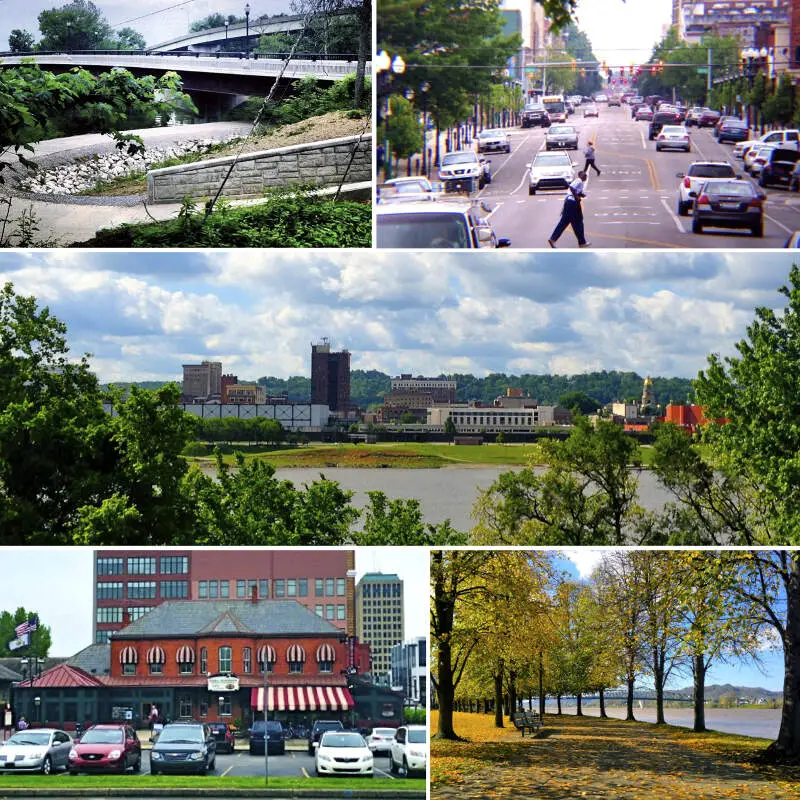
/10
Population: 46,637
Average Home Price: $115,258
Median Income: $39,066
Unemployment Rate: 7.8%
Crime Per Capita: 0.0335
More on Huntington: Data | Crime | Cost Of Living | Real Estate
Compared to some of the other towns on this list, the unemployment rate in Huntington isn’t that bad. It comes in at 7.8%. Unfortunately, these jobs don’t pay very well, resulting in a median income of $39,066. Mired in this low-wage environment, nearly a third of town’s 46,637 residents suffers below the poverty line.
Situated along the Ohio river, just over the water from the state of Ohio, Huntington once provided a vital transportation hub in the western part of the state.
Those boom days are obviously in the past. Still, Huntington does serve as an important commercial and cultural center for the region. Just head over to the Huntington Museum of Art to see what we mean.
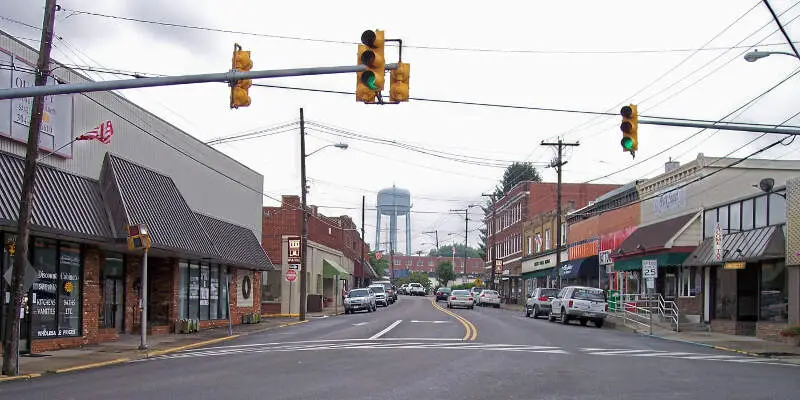
/10
Population: 8,157
Average Home Price: $127,514
Median Income: $48,050
Unemployment Rate: 8.3%
Crime Per Capita: 0.0022
More on Oak Hill: Data | Crime | Cost Of Living | Real Estate
Like whitewater rafting? Oak Hill provides a good base of operations. The nearby New River draws visitors from all over the world. Even if rafts and kayaks aren’t your thing, there’s plenty of hiking in the New River Gorge National Park.
So Oak Hill draws its share of visitors seeking an outdoor adventure. Presumably few of them have chosen to move permanently. Why not? Well, it’s tough to make a living in town for anyone who isn’t a rafting guide.
The unemployment rate sits at 8.3%, while the poverty rate runs to 18.2%. Meanwhile, the median income hovers at $48,050. Housing, diversity, and schools prove dicey as well.
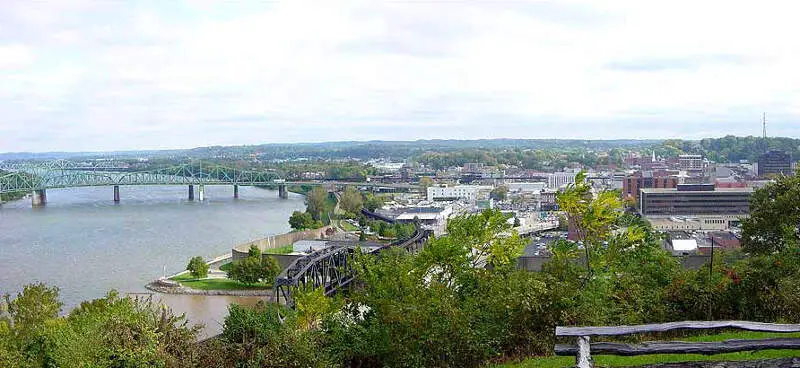
/10
Population: 29,685
Average Home Price: $134,004
Median Income: $41,921
Unemployment Rate: 6.9%
Crime Per Capita: 0.0384
More on Parkersburg: Data | Crime | Cost Of Living | Real Estate
With 29,685 people, Parkersburg represents an important population center in a largely rural region. As such, it has its share of cultural draws. This includes the Oil & Gas Museum and the Sumnerite African-American History Museum. And let’s not forget about the Downtown Throwdown, a festival focused on BBQ and beer. What else could you want?
Well, good-paying jobs for one thing. Unfortunately, there aren’t many of those in town. Instead, the area sports an unemployment rate of 6.9% and a median income of $41,921. Those factors contribute to a poverty rate around 25%.
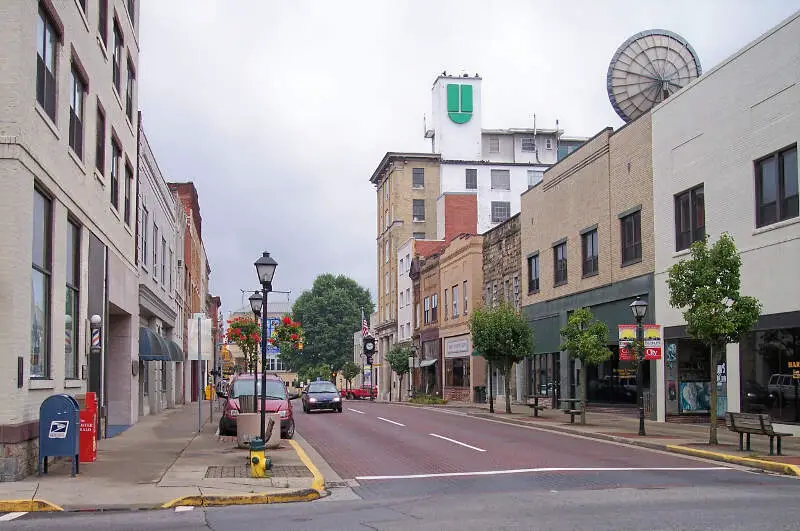
/10
Population: 17,132
Average Home Price: $113,834
Median Income: $41,277
Unemployment Rate: 4.7%
Crime Per Capita: 0.0830
More on Beckley: Data | Crime | Cost Of Living | Real Estate
Beckley takes the 7th worst place spot on this list for a number of reasons — below average education, income, unemployment, and student expenditure statistics.
But what gives Beckley its main thrust toward the top of this shameful list is its crime index — the worst in the whole state.
Despite these numbers, Beckley actually does rank as having the best weather in the state, measured in terms of humidity, rain and sunny days each year. At least they have that.
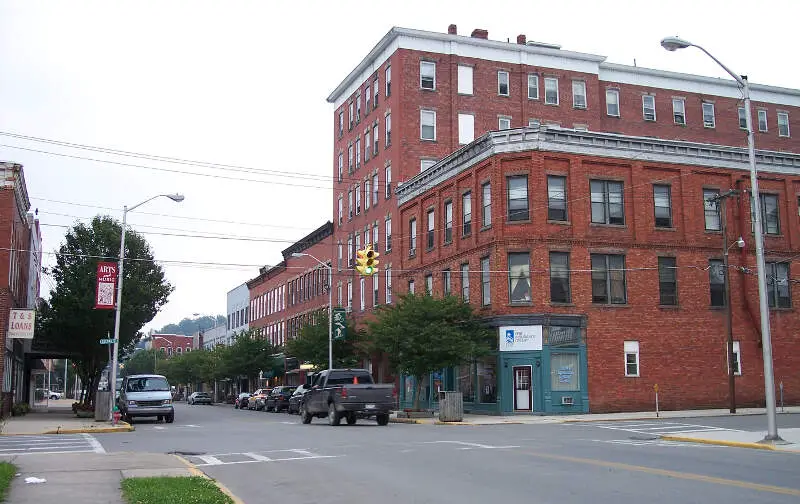
/10
Population: 6,935
Average Home Price: $142,726
Median Income: $39,875
Unemployment Rate: 11.2%
Crime Per Capita: 0.0297
More on Elkins: Data | Cost Of Living | Real Estate
Elkins, located in Randolph County, West Virginia, ranks as the number 7 worst place to live in the state. While it is important to approach this topic with a neutral perspective, it is evident that Elkins faces challenges in terms of safety and crime rates. Although specific crime statistics are not available in the given data, the mention of its ranking in terms of violent crime and property crime suggests an area of concern. However, it is crucial to note that with dedicated efforts and community involvement, things can potentially improve. Elkins’ location along the Tygart Valley River adds to its appeal, but addressing issues related to crime and safety will be vital for its growth and development.
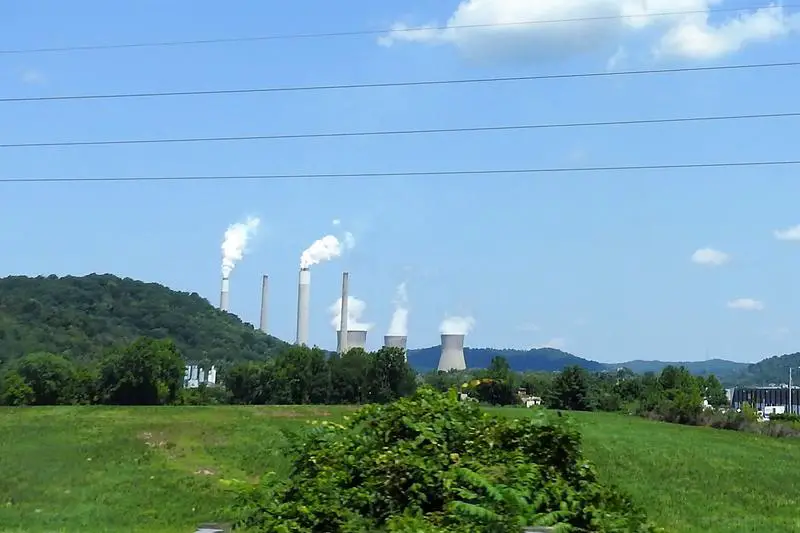
/10
Population: 6,540
Average Home Price: $121,752
Median Income: $49,742
Unemployment Rate: 8.3%
Crime Per Capita: 0.0413
More on Nitro: Data | Crime | Cost Of Living | Real Estate
Nitro, located in Kanawha County, West Virginia, is unfortunately recognized as one of the worst places to live in the state. With a population of 6,540, Nitro struggles with various issues that contribute to its negative reputation. One significant concern is the high crime rate, making it one of the most dangerous places to reside. In 2021, Nitro reported 11 violent crimes and 259 property crimes per capita. These statistics highlight the safety concerns residents face on a daily basis.
Beyond crime, Nitro also grapples with economic challenges. The median income in Nitro is $49,742, which falls below the state average. Additionally, poverty levels are distressingly high, with 18.0% of the population living below the poverty line. These factors contribute to a poor quality of life for many residents.
While Nitro faces significant issues, it’s important to remain neutral and acknowledge that with dedicated effort and support, improvements can be made. By addressing crime rates and implementing initiatives to boost income and reduce poverty, Nitro has the potential to become a safer and more prosperous community within West Virginia.
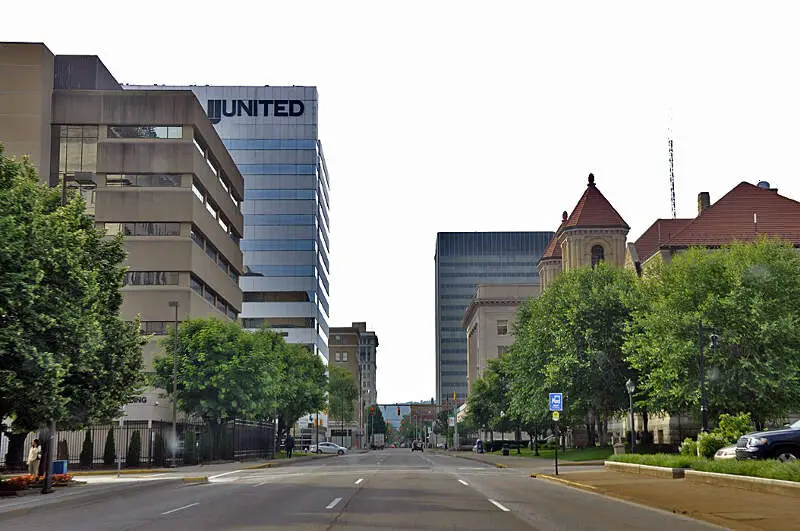
/10
Population: 48,415
Average Home Price: $154,944
Median Income: $58,902
Unemployment Rate: 5.8%
Crime Per Capita: 0.0464
More on Charleston: Data | Crime | Cost Of Living | Real Estate
Methodology: How we determined the worst places to live in West Virginia for 2024
To figure out the worst places to live in West Virginia, we used Saturday Night Science to idenift what kinds of things people like and then decide what cities have the least amount of those things.
We don’t think it’s a stretch to assume that people like the following things:
- Good education
- Lots of jobs
- Low crime
- Low poverty
- Nice homes
- High incomes
- High population density (Lots of things to do)
- Short work commutes
- Health insurance
The data comes from the Census’s most recent American Community Survey and the FBI Uniform Crime Report.
We broke crime down into violent crime and property crime to give violent crime a more significant weight. If you did a simple calculation of all crimes per capita, property crimes are typically 7x more common and bias that ranking.
Furthermore, only cities with at least 5,000 people were considered — leaving 24 cities.
We then ranked each city from 1 to 24 for all the criteria, with a #1 ranking being the worst for the particular criteria.
Next, we averaged the rankings into one “Worst Place To Live Score.”
Finally, we ranked every city on the “Worst Place To Live Score,” with the lowest score being the worst city in West Virginia — Bluefield. Read on for a detailed look at the ten worst cities in West Virginia. This article is an opinion based on facts meant as infotainment. We updated this article for 2024. This list is our tenth time ranking the worst places to live in West Virginia.
Summary: Wrapping Up The Worst In West Virginia
If you’re looking at areas in West Virginia with the worst economic situations, where there’s higher than average crime and little to do, this is an accurate list.
And in the end, Bluefield ranks as the worst city to live in West Virginia for 2024.
The worst cities in West Virginia are .
If you’re curious enough, here are the best cities to live in West Virginia:
- St. Albans (Pop. 10,753)
- Vienna (Pop. 10,642)
- Bridgeport (Pop. 9,255)
For more West Virginia reading, check out:
- Richest Cities In West Virginia
- Safest Places In West Virginia
- Best Cities For Singles In West Virginia
Worst Places To Live In West Virginia
| Rank | City | Population | Unemployment Rate | Home Price | Median Income | Crime Per Capita |
|---|---|---|---|---|---|---|
| 1 | Bluefield | 9,619 | 6.4% | $101,761 | $45,854 | 0.0145 |
| 2 | Martinsburg | 18,678 | 9.1% | $275,161 | $55,240 | 0.0297 |
| 3 | Clarksburg | 15,977 | 5.9% | $103,032 | $46,595 | 0.0404 |
| 4 | Huntington | 46,637 | 7.8% | $115,258 | $39,066 | 0.0335 |
| 5 | Oak Hill | 8,157 | 8.3% | $127,514 | $48,050 | 0.0022 |
| 6 | Parkersburg | 29,685 | 6.9% | $134,004 | $41,921 | 0.0384 |
| 7 | Beckley | 17,132 | 4.7% | $113,834 | $41,277 | 0.0830 |
| 8 | Elkins | 6,935 | 11.2% | $142,726 | $39,875 | 0.0297 |
| 9 | Nitro | 6,540 | 8.3% | $121,752 | $49,742 | 0.0413 |
| 10 | Charleston | 48,415 | 5.8% | $154,944 | $58,902 | 0.0464 |
| 11 | Weirton | 18,971 | 7.8% | $130,867 | $57,373 | 0.0046 |
| 12 | Fairmont | 18,402 | 7.9% | $157,592 | $55,084 | 0.0175 |
| 13 | Wheeling | 26,900 | 6.2% | $133,839 | $46,516 | 0.0355 |
| 14 | South Charleston | 13,527 | 6.9% | $153,555 | $58,756 | 0.0512 |
| 15 | Moundsville | 8,056 | 5.5% | $117,602 | $46,070 | 0.0178 |
| 16 | Morgantown | 30,220 | 9.9% | $267,332 | $41,103 | 0.0264 |
| 17 | Princeton | 5,833 | 5.2% | $151,800 | $41,782 | 0.0074 |
| 18 | Dunbar | 7,418 | 1.5% | $114,878 | $48,396 | 0.0334 |
| 19 | Buckhannon | 5,201 | 6.1% | $152,327 | $43,621 | 0.0171 |
| 20 | Hurricane | 6,908 | 3.1% | $240,660 | $70,861 | 0.0034 |
| 21 | New Martinsville | 5,210 | 6.7% | $135,488 | $50,235 | 0.0027 |
| 22 | St. Albans | 10,753 | 6.2% | $138,016 | $60,524 | 0.0290 |
| 23 | Vienna | 10,642 | 5.8% | $174,695 | $62,979 | 0.0376 |
| 24 | Bridgeport | 9,255 | 1.6% | $269,583 | $96,063 | 0.0139 |

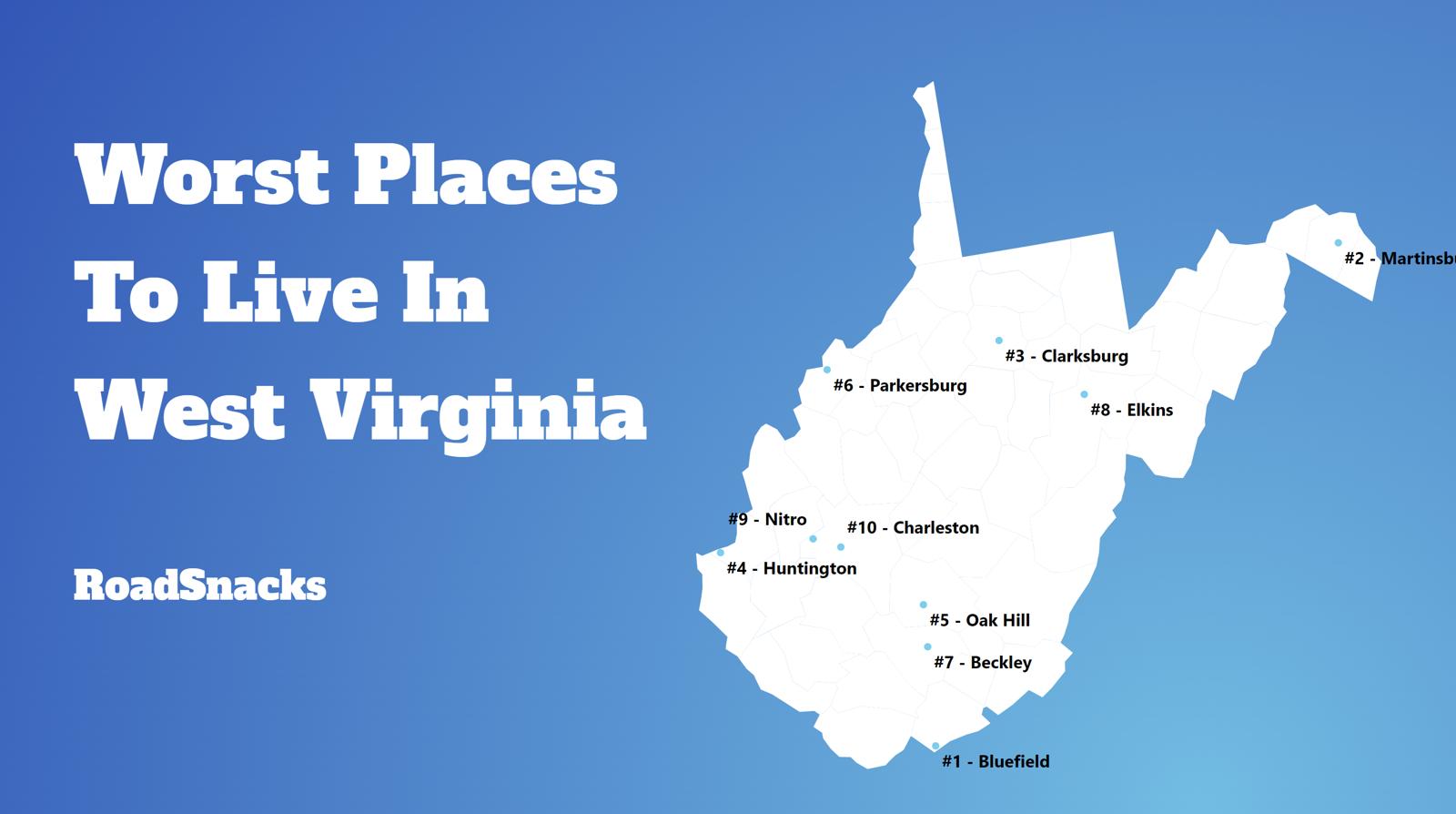
Why be so negative? How about focusing on something positive about WV?
can can flip people off if they as where we are from
this just gave me cancer.
because it is WV there is no positive.
I wouldn’t bury my dog in that state it is run down and dirty in Charleston and they have a big drug problem.
How did you determine which “cities” to use for the purpose of this list? I see only a handful of towns listed here. Also, using “short commutes to work” is a bogus qualifier…first, how short is short? Who determines what distance short is. And second…it’s WEST VIRGINIA…most of this state is rural…there isn’t going to be a “short commute” from the front door to the end of the driveway… And based on your lead-in to the top 10 Worst Cities in WV, the rest of the criteria you used is bogus as well. You said “We compiled a list of which places in West Virginia are the least wild and wonderful to live” yet only one of criterion you used in determining which cities were the “worst of the worst” had anything to do with WV’s claim to being Wild & Wonderful, and it was vague at best. When you use flawed criteria to determine the value of something, you will have skewed results. Not to mention, that your evaluation only takes into consideration those statistics that are on paper. To be a truly acurate measure of whether a place is great to live or awful, you need to survy the people and take their answers into consideration as well.
I like your comment. Bridgeport is a best well this is opinions! What I would consider a good town is NOT what the world would choose! I would want to be in a community that loves Jesus and is accountable to Him! GOD BLESS YOU!
….and that is why WV sucks -due to religious simple minded people who have no interest in improving the state’s economy and social issues.
Just because people are religious doesn’t mean they are simple minded & have no interest in economic, political or social issues! You & most others are selling WV short!
Neither myself nor my husband are natives-we chose to live & raise our child in WV. I am a retired teacher after 34 yrs. in the classroom, his dad was a CPA with an MBA and our son is also a CPA with an MBA! He is a happily married (to a beautiful & talented Christian native) Christian and father of adorable twin toddlers. He is a Managing Senior in one of the largest CPA firms in the eastern US! His wife owns her own business & is Music Director at their church! I’d say WV is a pretty good place to live & raise a family!
Lol you and you situation DOES NOT reflect the masses who live in the area. YOU are the exception. I stay to myself because the only thing I see are drug ridden ignorant people who consider themselves God fearing Christians who know nothing of the Bible or politics but could tell you about pills, meth, weed and who has what not to mention white trash gossip of meaningless things. Even allot of the working class people are the same. THERE IS A PROBLEM HERE! I was born and raised here and I can tell you how it USE TO BE and what is different now. THE WILLFULLY ignorant are all that’s left. If it weren’t for my aging parents who need my help I’d already be gone.
I guess any poor city in WV would look Very good to anyone who is retired. They have regular income & housing would look mighty cheap to live a good life. Probably why they moved there from the other “not so cheap” states to live, because they HAVE REGULAR INCOME. Hello! Bragging is the way I see it when anyone says how good they live, in a poor state. Try working for your living & forgetting the retirement coming in—then see how comfortable your life is, there.
No it’s not christians fault west Virginia sucks. You vote for the democrat party for decades. Slavery is live and well in the democrat party. One day maybe you will want change but till then keep voting for misery.
Robert Byrd, a democrat, was the best thing that happened to WV. Except for him, the state keeps voting Republican, against their own best self interest. Don’t know how you equate slavery to Democrats.
WV does not suck you are probably a child trying start a internet fight so let me hit you with the facts. One WV is Republican and has been for years now, two WV what are you talking about slavery? It does not matter if you are a Democrat or Republican, there are some democrats that are for slavery and vise versa.
Obviously, you do need an education. Slavery in WVA? Where? As far as Democrats go, who do you think gave you all the benefits that poor people are allotted? I never understood a poor man or woman voting for a Republican, just ask yourself what they ever did for you.
Robert Pickering are you serious? Byrd was a Grand Wizard of the KKK. Abraham Lincoln the founder of the Republican party was famous for ending slavery. MLK was a Republican. Johnson and his war on poverty which gave rise to the welfare state incentivised single parent households because you could not get benefits if married. It has been proven that the single biggest predictor of someone being poor is coming from a single parent household. By creating the welfare state democrats have cheated millions of blacks and rural white Americans of opportunity before they even had a chance to try. Did you know 80% of Planned Parenthoods are in Black neighborhoods? Fiercely defended by Democrats nothing says racism like the prevention of blacks to multiply. Think about it 80% of their business model is aborting black babies. The Democrats in congress fight like hell to keep this funded. West Virginia is just now starting to see growth. Guess what we have a Republican Governor and President for the first time in a long time so yes it’s not only Republican all the way but Justice and Trump all the way.
So Beckley is the worst and Welch doesn’t even make the list? I don’t have to crunch numbers to prove that Beckley is a way better place to live than Welch either, I’ve simply driven through them…
Ridiculous. There are maybe 15 towns with population of over 10,000 people in the state, to make of list of the worst and best places is preposterous. Martinsburg is probably in the same list as best places to live in WV. Doesnt work in a state with the population base of WV.
Roadsnacks doesn’t have a clue! They know nothing about the real West Virginia and nothing about some great small towns.
Now the government knows all the problems they can fix them
Would someone please just respond to this email by telling me why on earth someone feels the need to write articles about the “worst” ANYTHING?? Honestly, have you nothing better to do? What, pray tell, do you hope to accomplish by publishing negative non-facts about communities, especially when those communities are may be doing the very best they can to keep their heads above water? You remind me of the kid in school who felt like they had to bully the little chubby boy or the girl with the funny looking glasses.
I see that “Chasing Chains” is located in Durham – – OMG, really!!!?? I lived in Durham and now Durham County, and seeing this article that included my HOMETOWN in WV makes me feel like going to the front door of one of the “founders” of Chasing Chains to give someone a piece of my mind, (or maybe a swift kick in the rear end!!)
Why don’t you guys get out into the community and see what you can do to help out folks, improve the area, or maybe spread GOOD WILL!! Have you ever thought of that?! Why don’t you try writing a piece of real journalism that might inspire someone in a POSITIVE way?! I think most people are sick to death of hearing others belly ache about their own situation or criticize someone else’s.
Have I made my point here? Need I make any more suggestions? Someone is likely to include your article and/or this Chasing Chains and RoadSnacks on a ‘WORST’ list somewhere!! How would you like that!?
I’ll be interested to see your reply.
Mary Beth Cecil
They want you to fix it, through your findin prayers, both blessins and curses, in the Bible.
“Beckley takes the first/worst place spot on this list for a number of reasons – below average education, income, unemployment, and student expenditure statistics.” You meant, I think, “employment rate” instead of “unemployment “. The wording of each city’s description is similarly convoluted and grammatically incorrect. How can you discuss the education of the ten cities’ populations when you can’t write properly? It pained me to read this article.
Huntington this year was a quarterfinalist for 50,000 population category of Americas Best Cities. To put that in perspective a more reputable source found that Huntington is educated, culturally elevated above the state of WV, and the economy is out pacing most of the entire state. Therefore good sir I must say you have not researched this article very well.
I couldn’t agree more with this artical. Good job. I have spent time in Hutington, Clarksburg, Keyser, Bluefield, Beckley and currently live in Martinsburg. Each of these towns are all holes.
It’s amazing to see how offended people get when you say something bad about West Virginia. Its definitely miss placed pride in these locations. If you all don’t believe this list spend some time in Martinsburg.
Just watch out for all the heroin needles on public sidewalks, parking lots and parks all around town. If you’re shopping don’t use cash after dark. You will be robbed when you leave the store. If you’re a woman don’t walk down the street alone, dudes will try to pick you up for sex and they don’t like to hear no. Homeless men hangout all over town, in the mall (the mall is about dead, only about 12 stores remaining), at the library (witch has cut hours because in Martinsburg, education is a low priority), in the park, the train station and just all over downtown. All they do is drink, do drugs and panhandle for cigs and booze money. You can’t even walk downtown without someone asking for money, a cig, and they get really pissed if you don’t give them anything, as if they are some how entitled to what you have.
As for the ‘Almost Heaven’ crap everyone is always talking about, its only almost heaven here because leaving the house is putting your life on the line.
If you feel this way then why don’t you do us all a favor and move to a different state? I think everyone wins in that situation
Yes, Austin, telling people to “move away” will solve the problems in our state. It’s people like you that make WV a hellhole to live in—you don’t want anything to change, and those of us that do want things to change seem to pose a threat to your ‘way of life’.
You nailed it Dave.
I think it’s funny that Cory is knocking education in Martinsburg, but can barely spell himself. Let’s count the number of misspelled words.
It hit Clarksburg right on the head. It didn’t mention the amount of deaths due to drugs. Clarksburg has no entertainment of any sort. All you have is oops nothing you have to go to Bridgeport to even watch aovie or a delapadated drive in outside of Shinnston with toilet facilities that’s not fit for animals. You have zeal Mart and the outside mall and a lot of places to eat, so come and see obesity at its finest and take your camera to Wal Mart and you might get some interesting shots
Using the word “science” doesn’t just magically make your list credible. How did you decide what makes your variables good or bad? Why are no towns with populations less than 5,000 considered?
i dont agree on this at all beckley is a very nice place to live yea theres some flaws but there are incredibly nice people the nicest you’ll meet and i know alot of people think we are all red necks but thats not true! There are very classy people here like my family we wear very nice clothes we wear shoes and we brush are hair and bath every day!! and we dont all live in old small redneck houses either we have mansions and we have a very nice home!! beckley is a great place to live!! YOU GUYS ARE VERY VERY VERY WRONG AND U SHOULD BE ASHAMED!! so good day!
And how many are like you in your life style versus the rest of the masses…. This is what this article is about. The masses not the exceptional. I know your type or types as long as your and yours are doing fine to hell with the rest and when articles like this comes along it’s a personal attack to YOU. Why do you get upset?
I am so surprised that Beckley tops the list for the worst places to live. I love Beckley and in my opinion, it is the BEST city in West Virginia. I have lived in Beckley for 31 years and have enjoyed the peacefulness of the area. I am a retired teacher and have taught many students who have gone on to become productive citizens. Crime is everywhere and in today’s society a town should be judged on so much more. I find that there are numerous things to do in our town, kind and caring people, and beautiful West Virginia mountains. Our educational system in the county is a very good one, we have community colleges, and WVU is now going to be apart of our town which will bring many advantages to our youth. If there is unemployment, let’s put the blame on our national leadership and federal government. Many fine people have lost their jobs because of the EPA and other factors that have fought a war on coal. Also, with the moral decline in this country we can see why crime is up. People need to learn values and take responsibility for their actions. Today, people do what is politically correct instead of what is morally RIGHT.
For sure Clarksburg is at the bottom of the trash can.Most every store is for sale/rent. They still pay meter maids to troll the streets putting tickets on cars in a has been ghost town. They are loaded with cops running wild. The whole town makes a citizen feel a defence mode . liken to cops feeling as if the town’s folks are the enemy . There is absolutely nothing here as entertainment ,culture ,arts etc.
Its a huge ghetto barley holding its head above water. I moved here and question my own sanity for staying . The best thing for Clarksburg is to see it in your rear view mirror.
There are so many errors in this I don’t know where to start.
Four “towns” you list are not towns. Cross Lanes, Sissonville. Pea Ridge and Teays Valley are unincorporated areas with some population. Teays Valley has a post office but its name is Scott Depot.
Now I will move on to your comment about South Charleston being northwest of Charleston.
WHAT MAP DID YOU USE?
DO YOU KNOW WHAT A MAP IS?
A first grade student could look at a map and clearly see South Charleston is south west of Charleston.
Your ratings are a boatload of crap.
urg. I have lived in Illinois, Florida, Washington state, Japan, Guam, and now I am in Kentucky..Originally, I was in West Virginia. West Virginia will always be my home.My family and a lot of my friends are from W. V.
The information is not a total reflection of the city’s in West Virginia example would be Charleston. Charleston has a horrible infrastructure. The drainage system is,way out dated for the population of the city. People’s basements are constantly flooded when there is to much water for the drainag system to handle.would you like to buy a home there? Also the,crime rate and drug issues are horrible. I think this study totally needs to be looked at or totally taken out because it is not a correct reflection of the cities in this study.
Man… This dude really has something against small towns… Hardly any of his top ten worst of any of the states have pops of over 50K, and dude, seriously? Population density is a positive? Give me a break! Maybe in your libtard utopia that you have cocooned yourself with you can believe that BS, the rest of us will just hang out in our small towns waiting for something terrible to happen!
As a living resident of WV, I would like to add that a much more constructive opinions articles could be used by show people were landfills which are contaminated with radioactive drilling wastes are being dumped ” like fairmont without regulations”, and how key manufacturers dump in the rivers like say chemical valley above charleston and up by the ohio river, or hey how about what is dumped and where the city water intakes exist. That criteria would be very important, but no lets just use crime! LAME… ” Who needs a decent chance at life right?, one must have clean water, lets face it WV is so far behind, that most people do not have water, because its contaminated by mines and frack wastes, they only test for chemicals they know are in the waters, so when they taste something out of the ordinary they just increase the chlorine levels, says all of Charleston.” How about where the fracking dumps are deep injection wells next to rivers/ next to reservoirs, and where the trucks dump the SOUR BRINES, or Drilling injection wastes onto the roads at night, call the police, they laugh at it. Did I mention they are using the waste brines which are mixed with 700+ deadly chemicals drying it up in aeration ponds, with tarps next to local residential homes, which breathe that air 24/7 and taking the salt residues to a dump onto the road ways, which then melts and feeds the creeks, which the animals drink and people eat. I would like to see real results, if your going to slam WV, at least do the work! Expose critical areas that pose hazards, then offer solutions, at the moment gas companies are destroying Wetzel County region, working north, so if you dont want to breathe benzenes and million other air chemicals avoid the entire northern panhandle, courts are on the Gas companies sides. Also if one were inclined to look into the very near future, those counties will suffer the most, due to lack of funding from residents as they are all moving away, so no more tax revenues, which will leave no funding for schools, and will drive everyone out of the state, miners are undermining peoples homes in wetzel, working towards new martinsville areas, so longshore mining is destroying the structure of the lands, and the proposal is to dump toxic waste into the mines down the road, yummy stuff, ps, all well water is destroyed by both operations making it near impossible to live in those areas affected. Wetzel-New Martinsville and territory north, are destroyed by factories now which are placed into the wood lines up on the hilltops, remote places which have little EPA oversight, and pollute the most fowl crap ever imagined, who wants to live in the countryside and be poisoned by pumping station and compressor stations making fuel which gets dumped out onto the grounds and air. PS> Shinneston has one of the highest cancer rates in WV. Why not look at cancer rates based by city year over year by % percentages?, oh yea, hit a nerve, getting robbed of your life is far worse than crime in small cities! WV the land of the heavenly, where you can slowly die at home, where doctors can blame everything on, I.B.S. your eating habits, and ignore environmental toxins, from poisons and vented gasses and wells contaminating your backyards to drinking it from the rivers. 😉 WV is a poisoned state, if you value life and your loved ones don’t even consider this state, it has no industry other than gass/coal mining, which will be gone in a few years and offers little to no hope for its residents. Leave while you can, because once your sick, its forever! People dying all around us from this stuff, and no one bats an eye, they all die from the same thing natural death due to heart stopping, interesting how they spin that. Don’t believe me visit some Emergency room waiting rooms, look at the gas workers who are sick from drilling methanes etc form your own opinion, gather your own knowledge, don’t just take my word for it.
I would agree with you James. I was offered a job with the VA in Clarksburg a couple years ago, after finding out about the fracking and doing some research I declined the job offer. My health and my families health are too important to risk it for a good job. During that time I also researched the educational system in WV, if I remember correctly they were ranked 35th out of 50 states. The high school in Bridgeport was among the highest in the state of WV so we looked at houses to buy in that area. The housing prices were astronomical considering the area, I was shocked. After three days of looking at homes for $250K+ that were need of serious updating I gave up. Two different real estate agents told us that prices were elevated due to the fracking and oil companies in the area. So what happens in 5-10 years when these companies are done fracking? The beautiful state of WV will be left polluted and the housing market is going to crash when they have abandoned these sites; as well as leaving many people without jobs. I think the mountains and countryside are gorgeous however I think the governor made a gross error allowing fracking; it was a temporary fix to a sluggish economy and in the end the people in WV will pay dearly for it.
We just bought a home In Spencer WV. Moving in October. All interaction with folks in WV have been wonderful. These negative comments are scary.
I was born n raised in wva n I can say McDowell Co. Didn’t make the list?? Funny u must have never lived or visited wva…
I live in Beckley…..
If you’re going to overspend for a place to live, you might as well live in a big city. Like we said earlier, naming the worst places in Rhode Island sounds silly, since many of the places here would rank really high in other states.
The truth is the truth is the truth. Too many West Virginian’s want to paint a rosy picture of themselves while sweeping their problems under the rug.
The truth is that nothing is wrong with WV, I am sure wherever you live your state has problems. We do not sweep them ” under the rug”, we “paint a rosy picture” like every other state in the U.S., but the cities they are showing are not bad cities, if you had ever lived in WV you would understand but you most likely don’t so you would not know what the truth is.
I lived there and what John said is the truth.
Looking forward to retiring in WV and getting away from Commiefornia. Think WV is bad? LA is the Tijuana and the homeless capital of the West Coast. High prices, crap and crowds everywhere. I can live without “entertainment”. By the time I drive to it, I am exhausted and nearly dead from hostile, crazy drivers. Anyone who thinks LA is a great place to be, is delusional. Looking forward to living in the cradle of America!
Agreed
Well I found this list because one of the towns with a very low crime rate in West Virginia happens to be on this list in fact it has the lowest crime rate in West Virginia and that is Grafton. I live near Edgefield South Carolina which is considered one of the safest towns in South Carolina and many people consider it one of the best places to live in the state. It has its crime and it’s not perfect but it’s fairly safe. How you going to tell me the town that’s safer than 97% of cities and towns in the country is bad? And since when is high population density a good thing High population densities are a very bad thing I hate crowds. When my sister lived in New Jersey I kept thinking I needed to get out of there faster when I visited. I’m very happy to live in a place with a fairly low population density I live in rural Edgefield County South Carolina at the moment. I like living here, because it isn’t crowded. For the comments that people made about religious folks you know you can be religious and believe in science it’s not a contradiction except people’s minds. Here in South Carolina I love the fact that I can talk about Jesus in public. Of course I’m Catholic so some of these well-meaning Southern Baptist try to “save “me, it’s okay though their fellow Christians and I have no problem considering themselves that and many of them are very good Christians. And I’ve been to West Virginia many many times I think it is a beautiful state.
I’m Canadian and every year when I drive to Florida through West Virginia I am in disbelief of how many red necks and low budge people we see in WV. My family is mixed, I’m white but my wife is black and mixed daughter, nobody says anything to me but my wife gets all the racist comments at the Walmarts, restaurants or gas stations we stop in when passing through. I have to agree with this article, I have been all over the USA and West Virginia has to be the most racist, unintelligent state I have ever been in. I can’t believe how many run down pick up truck you see with gun racks in the back and the confederate flags on the hood or roof. (By the way the Confederates lost the civil war so if you fly the flag I guess that means you are still a racist). My wife refuses to stop for the night in WV because who knows how many KKK members still live in those small towns.
If you are concerned about the flags the gun racks and the beat up trucks then maybe you should stop to think maybe you have a problem. I grew up in wv and one of the guys I grew up with married a black woman. No one I know that lives in wv is racist. There life style is one they choose just like the one you chose. I cannot name one person there that wouldn’t go out of there way to help you. The color of your wife didn’t have anything to do with anything. Wv people are proud people and love their state. Seems to me that people see someone a little different and they Hollar racism. Seems to me that you are the racist one you are profiling people in the state and saying they are all racist. Maybe you should look in the mirror.
I’ve read this whole list and wonder the literal education level of the writers. Not to knock people, p!ease understand, BUT, when I see people writing who cannot properly express themselves, cannot spell even the most basic words, cannot form thoughts “on paper” and are (unfortunately) c!useless about some facts, I have to wonder WHO these people are…? Please understand that just because someone cannot perform the above observation’s means they are unworthy of being heard, but if anyone is expecting to be taken seriously, they had better come across as being at LEAST somewhat literate. Coming across as illiterate demeans you and easily causes readers to NOT take you seriously. Communication is important, and doing it properly and correctly MEANS something. Please people, if this post is to continue, please try to at LEAST come across as someone with even basic Intelligence. Yes, I have been the WV many times and DO like my visits there. Live there??? I don’t know. As always, what one likes, another might not. That’s normal. That’s what makes the human experience interesting. I, too, have traveled extensively, and WV is definitely a place that sticks in the mind. It’s easy to see through the comments of people’s pro’s and con’s on issues. Some comments were spot on, and this is from a total “outsider” looking in. Actually, I found all of this amusing. The people who stuck up for WV, good for you. NO place is “IT”, and will never be. All places cannot be the perfect places in California. Most of life is rough, somewhat uncultured and rustic. America, with all it problems, and they are growing faster every day, is still an interesting place. We ARE losing our country, and it seems as though we really may ultimately !ose it, but until then, we should fight and struggle to try to maintain what we have left. America isn’t America anymore. In name only. The young people have no idea of why we exist or what we’re supposed to stand for. THAT is why we are going to fall, and will fall. It’s sad. If today’s young people knew the U.S. from 50 or so years ago, despite its problems then, they would come out with a totally different perspective of what they are now missing. Right now, it’s all fighting, yelling for ” rights”, killng babies (don’t call it abortion), free use of drugs, mandating bathroom use of choice , no restrictions anywhere and the list goes on. NO ONE teaches the DUTIES that are required to live in the U.S. Freedom isn’t free. It’s enormously expensive to live in a society as ours, but it’s good and worth it if responsibility is practiced and respect is issued without restraint. I don’t see it anymore.
People, learn to communicate. No one listens to babbling illiteracy. You embarrass yourself and are not taken seriously. No, this is not meant to be an insult, but basic skills are a necessity, not an option. No one credible listens to fools and takes them seriously.
Cory your post of needles men and homeless people seem to describe every city in the us not just wv. Try going to Charlotte winstonsalem reliegh hickory or try anywhere in Georgia Florida Alabama Virginia Tennessee etc. all states with cities have these same problems. The issues is not the state the issue is the drugs the unemployment rate and the fact the government is supporting all this is a shame. If the government would drug test everyone before giving assistance then we wouldn’t have this unemployment problem and the guys you say are not taking no for an answer would be at work and not on the street.
You are wrong about Martinsburg having a terrible commute. The MARC Train connects it with DC, the AMTRAK connects it with DC and Chicago, and it is on the junction of two great highways, RT 45 and RT 81.
As far as crime – there are save neighborhoods and not so safe neighborhoods, like any city. Just like DC. My wife and I lived in Martinsburg for 7 years and never had any problems.
I grew up in Raleigh County – ten years in Beckley and then eight years in Grandview just down the road. I left at 18 for college and then travelled the world with my Air Force hubby. I swore I’d never move back due to the economy and ruralness but I always talked proudly of my home state. Well guess what? After looking for jobs from all over the US we are back here but in Jefferson County in the eastern panhandle not too far from Martinsburg. Why? Because of the cost of living in Virginia and Maryland we would be stupid not to buy here and drive in to work. Plus the school system here in Jefferson County is really great, the people are really nice, you can get out of the rat race that is the D.C. Metro area , and it’s just so pretty here. In this part of the state we have Martinsburg, Shepardstown, Charles Town, and Harper’s Ferry. We can be in Frederick MD, Hagerstown MD, or Winchester VA within 30-45 minutes and D.C. Like an hour and 15 minutes.
I’m closer to Martinsburg so we frequent there for quick shopping and I’ve never felt scared there at all. It actually reminds me of Beckley. It definately could use some updating in curb appeal but other than that it’s like anywhere else.
This listing in my opinion is flawed. Every town and country we lived in has its bad parts as do these on the list but great parts as well. It’s all in what amenities you’re looking for and jobs. The only reason we moved to back to WV was affordable housing and the military tax break for retired vets and this part of the state is alive and close to the things we don’t want in our backyard but can drive quickly to get to. WV is for us a quiet getaway.
Planning on moving to WV next year from California. Looking for a safe & quiet, but not too rural area. Good employment opportunities. My friend lives a few cities up north of Wheeler. Any suggestions would be appreciated. Thanks.
Mr. Zane,
I am a citizen of Philippi, WV, the 4th worst place to live according to your “science.” Your secondary analysis of the data isn’t in question. Barbour County managed to snag two of your worst top 10 (Belington) being the other. I’ve lived in Harrisonburg and Winchester, VA Martinsburg, WV (I’m batting 1000 on your list!) and Pittsburgh, PA. Philippi, when compared to the expensive housing and dense traffic in other areas, Barbour County is a welcomed change of pace. I have the fortunate opportunity to live and work in the same community. While I understand this situation isn’t afforded to many in my community, it’s hard to take the cynical tone in this article seriously. Specifically, your decision to use the unfortunate picture of Belington was a “infotainment” injustice given the options of solid building structures. Belington has a lot more to offer than just abject poverty.
As a blogger, you had the opportunity to take the high road by presenting the challenges facing each community “The Top 10 Cites Facing the Most Challenges in WV.” Kicking these communities while they’re down in economic indicators doesn’t serve the blogosphere in the best capacity. I guess it serves as good click bait, but it fails to get at the heart of what’s ailing some WV cities. Philippi certainly isn’t a tropical paradise, but it’s certainly far from the worst place to live. Hopefully, you’ll offer a more in-depth analysis of these fine cities one day, but until then, I’ll let you ponder this insight from Teddy Roosevelt:
“It is not the critic who counts, not the man who points out how the strong man stumbles or where the doer of deeds could have done better. The credit belongs to the man who is actually in the arena, whose face is marred by dust and sweat and blood, who strives valiantly, who errs and comes up short again and again, because there is no effort without error or shortcoming, but who knows the great enthusiasms, the great devotions, who spends himself for a worthy cause; who, at the best, knows in the end the triumph of high achievement, and who, at the worst, if he fails, at least he fails while daring greatly, so that his place shall never be with those cold and timid souls who knew neither victory nor defeat.”
I live among some of the finest people doing their best to restore the city to greatness. While we don’t have all of the preferred economic indicators, I certainly wouldn’t call the towns the “worst.” There are a wealth of opportunities awaiting discovery.
West Virginia as a whole
1) 6th worst in education
2) 1st worst depressed state
3) 2nd worst mortality rate
4) 2nd worst obesity rate
5) 1st worst place to retire
6) 6th worst in healthcare
7) 12th worst with drug problems
8) 1st worse in drug overdoses/deaths
9) 2nd worst economy
10) 7th worst in general health.
11) 1st worst in smoking cigarettes
HOUSTON… WE HAVE A PROBLEM.
Yes, I agree!
They have my deepest of sympathies.
And all that after 8 years under Obama. Now had those folks voted for Hillary things would have looked up. Instead they voted for another know-it-all blow hard from New York, who like all know-it-all blowhards posting here are of superior intelligence.
I think it’s funny due to people are so blind and can’t handle the truth…I have traveled to all of these locations some towns are called historical hahaha more like old crack house’s “please “!!!people need to move there to VA cause 90% are very weird EVERYONE ….I also hate that they are a bunch of weird bible thumpers who need to get over it…..ughhhh cant stand that they need better zoning and put all the local bums to a wooded area where others cant see the locals it would also be fare to say yes there pay sucks cause they only hire friends and family and keep it all weird…im just saying lots of my friend’s also agree..if those citys hiried new people and played right “”like pay good”” it would work also if they made the town MORE things to like as in mall’s and regular store’s it would work…and get rid of all the old timers this is our city BS …y’all don’t own the city …..stop adding that prayer charm bulsh*t..THANKS
Trust me the pictures he posted are right the towns are so borning and not very historical when there’s a bunch of hillbillies everywhere…hahahaaaaa
It amuses me how many people get offended by satire. Try using critical thinking and use this website for what it is: something to get an idea on places and going to the places to make your own judgment.
Though they were dead right about Memphis being the least desirable city to live in.
Ridgeley is so bad off it isn’t even listed in the statistics. Not a single school. Not a single grocery store. Nothing for kids to do. High crime rate. No doctors, no dentists. Just the most alcohol joints in an area I’ve ever seen.
I got a kick out of the fact that the author said that these places are the worst based on science. The author is as much of a scientist as a salesman calling himself “honest John” is honest. When a person tells you that his opinions are fact because he is a scientist and he is using science you know that he is either a pathological liar or just doesn’t understand science. The actual truth is that he is basing his opinions on limited facts. That is called short-sightedness. The readers must do additional research and understand the context to come to a fair conclusion.